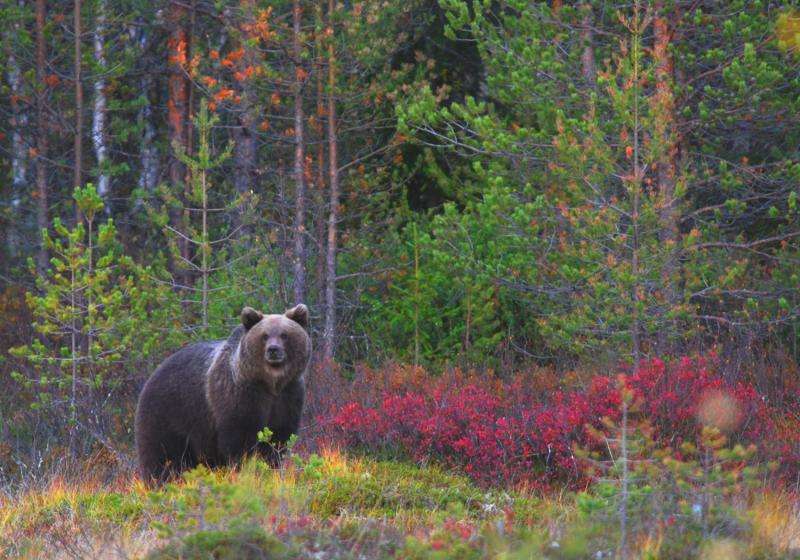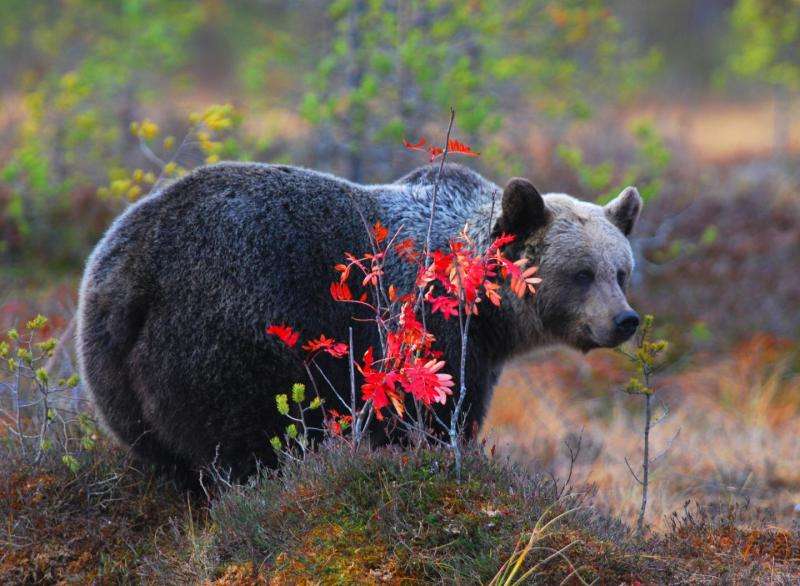February 4, 2016 report
Study finds half of attacks on people by large carnivores in the wild due to risky behavior

(Phys.org)—A team of researchers from several countries in Europe and Canada has found that approximately half of all attacks on humans by large carnivores in the wild can be attributed at least in part, to risky behavior by those that have been attacked. In their paper published in Scientific Reports, the team describes the study they carried out, their results and their hope that better education will prevent more such attacks from happening in the future.
To learn more about attacks on humans by large carnivores, which included several types of bears, wolves, coyotes and cougars, the team searched wildlife databases that held such information for attacks in North America, Russia, and three European countries—they discovered that over 697 reported attacks occurred over the time span 1955 to 2014. They also found that the number of attacks each year has been rising steadily. The databases also held information regarding the circumstances surrounding the attacks which allowed the team to sort and count various scenarios. The group also conducted research regarding human activities in the wild and found that the number of people venturing into remote areas has been rising rapidly during the same time frame.
In studying their data, the researchers found that roughly half of the documented attacks they studied occurred during what they describe as risky human behavior, e.g. leaving children alone in wilderness areas, walking a dog without a leash, or tracking a game animal that has been shot and wounded. They theorize that the steady increase in the number of such incidents is likely due to the growth in numbers of wildlife due to conservation efforts, and the rise in the number of people entering areas where wildlife live.

The researchers also pointed out that the number of attacks on people by bears and the like is still extremely small when compared to other wildlife—mosquitoes, spiders, snails, ungulars (hoofed animals) and bees kill far more people every year. They suggest that the public perception that large wild carnivores kill a lot of people comes about due to distorted media coverage of such events. They also suggest that education programs that teach people about the types of behavior to avoid when in the wild could greatly reduce the number of such incidents.
More information: Vincenzo Penteriani et al. Human behaviour can trigger large carnivore attacks in developed countries, Scientific Reports (2016). DOI: 10.1038/srep20552
Abstract
The media and scientific literature are increasingly reporting an escalation of large carnivore attacks on humans in North America and Europe. Although rare compared to human fatalities by other wildlife, the media often overplay large carnivore attacks on humans, causing increased fear and negative attitudes towards coexisting with and conserving these species. Although large carnivore populations are generally increasing in developed countries, increased numbers are not solely responsible for the observed rise in the number of attacks by large carnivores. Here we show that an increasing number of people are involved in outdoor activities and, when doing so, some people engage in risk-enhancing behaviour that can increase the probability of a risky encounter and a potential attack. About half of the well-documented reported attacks have involved risk-enhancing human behaviours, the most common of which is leaving children unattended. Our study provides unique insight into the causes, and as a result the prevention, of large carnivore attacks on people. Prevention and information that can encourage appropriate human behaviour when sharing the landscape with large carnivores are of paramount importance to reduce both potentially fatal human-carnivore encounters and their consequences to large carnivores.
Journal information: Scientific Reports
© 2016 Phys.org















